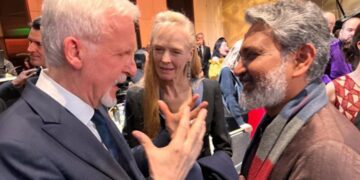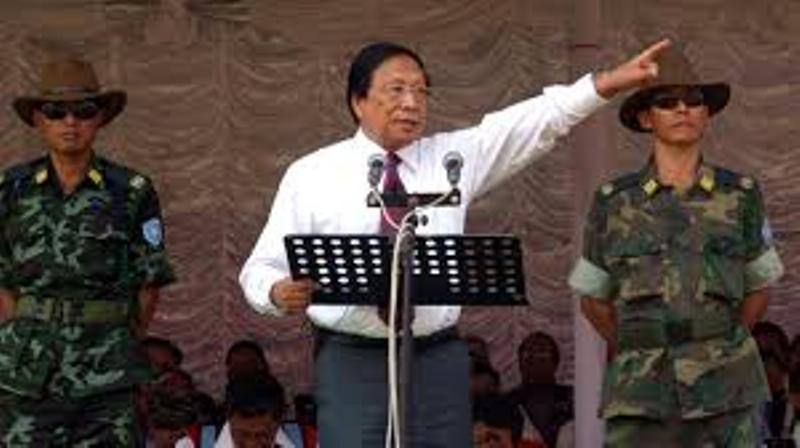The ceasefire with the NSCN (IM) will complete 28 years on 1 August 2025 without any resolution in sight. Indeed, the only encouraging aspect of the ceasefire is the fact that the insurgents have not returned to the jungles, although there are reports that they are threatening to do so if the dialogue process does not reach an acceptable conclusion sooner than later.
The NSCN (IM) continues to recruit, train, procure arms and even maintain camps in Bangladesh and Myanmar, where they regularly send their cadres on long-range patrols. Therefore, even as the peace dividend seems to have paid off, it must be understood that non-resolution of the Naga issue is creating an atmosphere in the region whereby long-term national security interests is being hurt.
The danger stems primarily from the manner in which NSCN (IM) and their proxies are charting and carrying out a war of attrition in certain parts of Arunachal Pradesh, Assam and Manipur. The geo-political engineering that it is carrying out in Manipur is in ample evidence, the time-tested NSCN (IM) approach being to hold the state to ransom by putting on economic blockades, and cutting the region from the rest of India.
Indeed, this time around it seems to be making the most of the unrest in Manipur by aiding the insurgent groups of both denominations—Meitei and Kuki—who are warring each other. The NSCN (IM) camps in Myanmar’s Somra Tracts are being used as a conduit for the insurgents from Sagaing Division and beyond to enter Manipur.
In Arunachal Pradesh, it engages the populace with Operation Salvation, a clear strategy to grab territory by converting the animistic tribes in the districts of Tirap, Changlang and Longding into Christianity.
The politics of the three districts are also so weighed down by the Nagas (both NSCN (IM) and factions of the NSCN (K), which was once known locally as the Naya and the Purana parties: the NSCN (IM)’s entrance was after the NSCN (K) had entered the area) that the seismicity is being felt in far-off Itanagar as well.
In Assam it courted the Dima Halam Daogah (DHD), having signed a “Hebron Agreement.”Cessation of hostilities with DHD has in no way lessened either the alliance with the Naga outfit or has brought “durable peace” to the expanse.
Furthermore, the NSCN (IM) is attempting to elbow into other areas by entering into alliances with other insurgent groups in order to extend its area of influence and has in the past set up umbrella organisations with an avowed objective of starting a unified move against the Indian state. The United Liberation Front of Seven Sisters, a front that included the ULFA, the DHD, the United People’s Democratic Solidarity, PLA of Manipur, etc was one such attempt.
Yet another was when the Self Defence United Front of South East Himalayan Region was formed to coordinate the activities of groups such as NDFB, National Liberation Front of Tripura and Kanglei Yawol Kanna Lup. The prolongation of the ceasefire—although it may be considered to be a “wearing down” strategy by some—would allow the formation of a “coalition of the willing” and make insurgent groups in the region more belligerent.
But the fact of the matter is that New Delhi has few options available to it in the face of the intransigence that the NSCN (IM) is showcasing, especially its demand for Greater Nagalim, and a separate flag and constitution. Indeed, not only have the state legislatures of Arunachal Pradesh, Assam and Manipur passed resolutions against the giving up of territory, but even the central government seems committed against any further territorial demarcation of the North East, and certainly a separate constitution and a flag.
But, even as the NSCN (IM) is quiet about its demand on sovereignty, its leadership knows that itmust at least appropriate territory that are Naga dominated and inform at least a section of its parish that Greater Nagalim has become a reality. Otherwise, its raison d’être would be questioned by its constituency, who have sacrificed much in the over seven decade-long insurgency.
Indeed, this aspect is particularly important for the NSCN (IM) general secretary, Thuingaleng Muivah. His real following is in the hill districts of Manipur, and in the Tangkhul tribe—of which he is a member—and it is nigh impossible that this tribe is left out of a deal that may be worked out. Muivah and his hard core followers would, therefore, resort to a variety of subterfuge in order to attain footholds in areas that they feel are traditionally theirs.
One aspect that has not been adequately publicisedin national fora is that the Indian state, primarily its able arm, the Assam Rifles, which is perhaps the only force that has been able to maintain peace in Nagaland against all odds, has controlled violence. This is despite the fact that innate differences that characterise the various Naga tribes continue to exist and one could, especially as a “war of succession” for the leadership of the NSCN (IM) nears, witness internecine warfare.
It is clearly to the credit of the Assam Rifles that it is closely monitoring the situation. The menace of extortion, too, has gone down considerably as a result of the force’s determined efforts.
While the strategy should not be to split groups and encourage dissonance, the aspect that may be academically utilised is the fact that tribes of Nagaland do not take too kindly to the Tangkhuls of Manipur. For instance, is the dream to integrate the Naga-dominated districts of Manipur into Greater Nagalim only that of Muivah’s? Has an intensive study been undertaken to find out what the Semas, Aos, Angamis, Lothas and other tribes inside Nagaland feel about incorporating Tangkhul-dominated areas of Manipur into Greater Nagalim? It has also been reported that Tangkhul domination inthe NSCN (IM) is not a feature that is appreciated in Nagaland.
There are other aspects that may come to the fore if timely steps are not taken to resolve the issue. The Naga movement has in the past been actively aided by China, Pakistan and by the unfriendly regimes of Bangladesh. It is a possibility that inimical interests might once again fish in troubled waters. Indeed, the memory of the NSCN (IM)’s Political Commissar, Anthony Shimray arrest some years ago in a case of gun-running is still fresh.
Indeed, the Chinese-Bangladesh (especially with the latter taking the anti-India path of late!) connection are still robust and will continue to be a factor in the NSCN (IM)’s agenda. The Naga outfit had successfully internationalised the Naga issue. It had joined organisations such The Hague-based Unrepresented Nations and Peoples Organisation and a Netherlands-based NGO called Kreddha. It has been reported that its executive director, Michael Van Walt Van Praag had chaperoned the NSCN (IM}’s anti-India subterfuges.
It is also being reported that the NSCN (IM) demanded a “third-party” negotiation on 8 November 2024. The peace process, in an already restive North East, may get more mired in controversy were third parties to enter the fray. The most important step that New Delhi should anvil immediately is the appointment of a full-time interlocutor. 21 Members of Parliament have recently urged the Union Home Minister, Amit Shah to “provide a detailed update” in the Parliament on the “stalled Naga Peace Process.”
The article also wishes to take the opportunity of psycho-profiling a belligerent group before it enters into a ceasefire: an imperative that might have escaped the high offices of New Delhi. It must be understood that a heightened sense of caution guides belligerent parties before they enter into a political reconciliation process.
The primary concern of such groups is whether the stronger party—as asymmetry characterises almost all cases of conflict between belligerents and constituted authority—would permit an honourable solution, which would be acceptable to the belligerent group and the constituency it seeks to represent.
Such groups also exercise caution as they sense that a coaxed entrance into a political process could be a ploy of the stronger party to “wear them out” by engaging them in protracted negotiations. But notwithstanding such predicaments compromises are often made when a belligerent party perceives a stalemate in the movement and when conflict fatigue begins to set in, as also when they realise that the populace among which they operate are building consensus to force the belligerents to enter into dialogue.
In such scenarios belligerents try to shape the environment in an array of ways, which may range from escalating the level of violence to internationalising the movement. The motivation is to force the stronger party to open channels for dialogue as the moves of the belligerent party become increasingly unacceptable. However, the movement from intention to actual institution of political process is usually long drawn: most belligerent groups put forward conditions that may not be acceptable to the stronger party.
But non-acceptable conditions are usually made only by way of bargaining counters, with a comprehension that a climb-down to acceptable conditions would eventually take place, and ones which were actually intended by the belligerents.
The sincerity of both parties to resolve conflict by adhering to the principle of mutual accommodation and by prolonging the peace dividend when fighting ends is crucial at this stage. This is primarily because of not only the possibility that subterfuges may be engineered by hardliners among belligerents who feel that they will not be given their due in a post-settlement scenario, but also because of the presence of spoiling efforts by vested interests.
Back channelling and secret parleys with the sincere mandate are best suited to navigate the process at such junctures: publicity normally results in devious objectives coming into play, derailing the political process in its infancy.
The ignominy with which the “Framework Agreement” of 2015 (which could have been the correct initiator for a comprehensive peace arrangement) and its scrivener had to be jettisoned is a clear example of an observable fact that could have been sensibly avoided! If secrecy was the key factor in the “Framework Agreement” motivation, it is not understood as to why there was so much tom-tomming of the “riddle wrapped up in an enigma” when it was signed on 3 August 2015 in the presence of Narendra Modi.
ALSO READ: Security concerns of import in India’s North East for 2025
In any event, a calibrated course correction exercise should now be undertaken, and in right earnest. It must closely study the activities that the NSCN (IM) is presently undertaking and active steps taken to ensure that India’s national security interest in a strategically positioned zone is not compromised.















